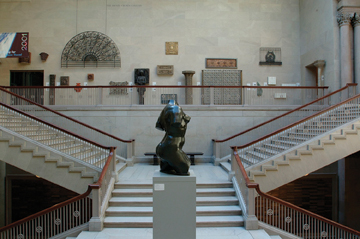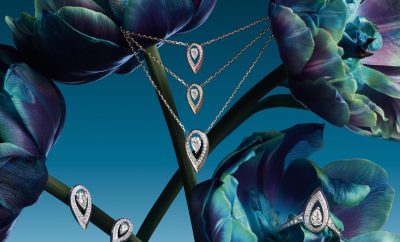
Museums
IRVING PENN
Underfoot
By Daniela Bonetto
One of the world’s preeminent photographers, Irving Penn (1917–2009) is famous for portraiture, still lifes, and fashion. However, the path that led Penn to the seemingly galactic abstractions of his late series titled Underfoot lay just outside his studio door. Irving Penn: Underfoot, on view at the Art Institute of Chicago to May 12 in the Modern Wing’s Carolyn S. and Matthew Bucksbaum Gallery (Gallery 188), features 36 exquisite gelatin silver prints presented as a complete series to the public for the first time. The series, created mostly in 2000–2001, shows the grit of Manhattan pavement transformed with Penn’s characteristic precision into a world of odd beauty. The works presented in the exhibition, once described to the artist by former Art Institute director James Wood as “the cosmos underfoot,” will also be accompanied by a demonstration of Penn’s painstaking photographic process.

Irving Penn studied design from 1934 to 1938 at the Philadelphia Museum School of Industrial Art under Alexey Brodovitch, who later hired Penn as his assistant, first at Harper’s Bazaar and later at the Saks Fifth Avenue department store. In 1943, Penn photographed an original cover for the October 1943 issue of Vogue, which marked the beginning of the photographer’s long-lived association with the magazine. Penn completed nearly 160 cover assignments for Vogue—an enduring partnership that made Vogue and the photography of Irving Penn remain synonymous to this day.

His decision to concentrate on the model or sitter, placing his subjects against a neutral background and removing them from conventional settings, was only one part of his wide-ranging innovation. Penn’s oeuvre includes nudes, still lifes, product advertisements, and ethnographic studies taken around the globe. Treating the pebbled, gum-spattered Manhattan pavement as a readymade canvas, Penn walked the city streets with two assistants, a folding chair, and a medium-format Hasselblad camera specially fitted with tubes that extended the lens nearly to the ground. Penn used colour positive film but printed his works in black and white with lengthy darkroom manipulations and toning. The uncanny appearance of familiar yet unplaceably remote images in Underfoot—masticated gum, cigarette butts, and discarded matches—demonstrates Irving Penn’s innovative and meticulous technical process. The photographer’s camera and other equipment, like a light-blocking cardboard triangle, are displayed in the gallery to animate his working method.

The Irving Penn Foundation has generously offered all 36 photographs in the Underfoot series as a gift to the Art Institute in memory of Jim Wood, with whom Penn worked closely to establish the vast archive of photographs and papers held by the museum. Last year, the Art Institute received more than 100 remarkable photography gifts in honour of Wood, with impressive contributions that include several prints by Florence Henri, André Kertész, Abelardo Morell, and Milton Rogovin. The Art Institute also recently launched an invaluable online resource that illuminates the working methods, themes, and techniques of one of photography’s most significant figures.
artic.edu.com










0 comments